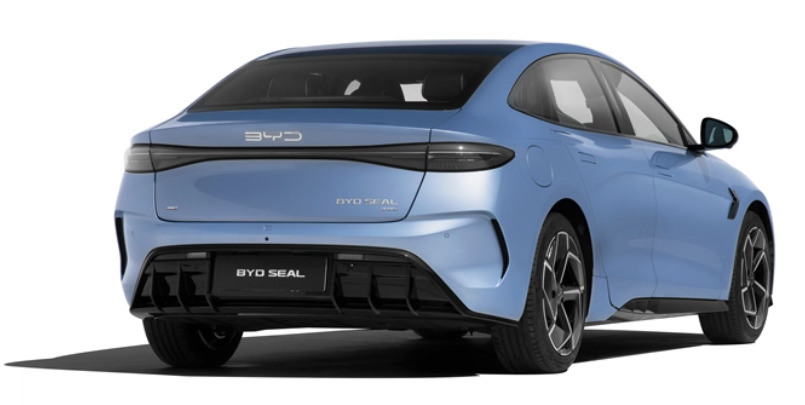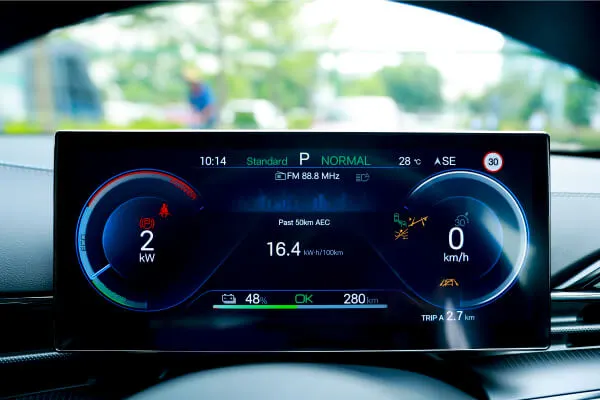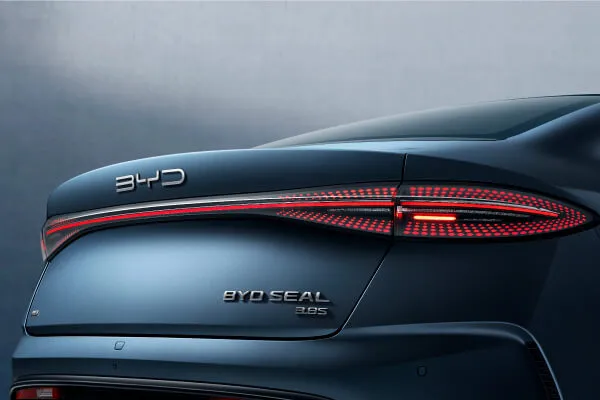What battery options are available for the BYD Seal?
The BYD Seal offers two battery options: a 61.44 kWh battery for the Dynamic Range and an 82.56 kWh battery for the Premium and Performance variants.

Fuel type
Electric
Certified range
510 - 650 km
Transmission
Automatic
Battery Capacity
0.061 kWh • 0.082 kWh
Seat capacity
5 seater
Available colours
4 colours




Charging Time
56 mins
Battery Type
Lithium-ion

Infotainment System Display Touch Sensitive

Rear Suspension

Wheels Alloy

Headlights LED

Front Fog Lights Lights placed low on the bumper to improve visibility in fog, rain, or mist.

Wireless Charger

Instrument Cluster Digital

Taillights

Rear Defogger
The BYD Seal offers two battery options: a 61.44 kWh battery for the Dynamic Range and an 82.56 kWh battery for the Premium and Performance variants.
The Dynamic Range provides a WLTC range of up to 520 km, while the Premium and Performance versions offer varying ranges based on their battery capacities.
The Dynamic Range accelerates from 0 to 100 km/h in 7.5 seconds. The Premium Range achieves this in 5.9 seconds, and the Performance version does it in just 3.8 seconds.
The BYD Seal features an automatic transmission across all variants.
The BYD Seal has a ground clearance of 145 mm.
Discover. Decide. Drive.
Explore at your pace, with expert recommendations if needed. Finalise and book your car at the best price.
Financing the right way
Access the best loan options with hassle-free, paperless financing.
Prepare to drive
Schedule delivery for your special day and track updates effortlessly.Schedule delivery for your special day and track updates effortlessly.